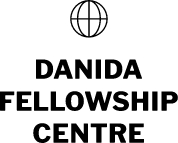Large-Scale Integration of Wind Power Generation in Ethiopia – LastWind
Info
Start date: 1 August, 2023 End date: 31 July, 2026 Project type: Research projects in countries with targeted development cooperation (earlier Window 2) Project code: 23-M01-AAU Countries: Ethiopia Thematic areas: Energy, Lead institution: Aalborg University (AAU), Denmark Partner institutions: Debre Berhan University (DBU), Ethiopia Hawassa University (HU), Ethiopia Project website: go to website (the site might be inactive) Project coordinator: Yajuan Guan Total grant: 5,370,376 DKKProject summary
Ethiopia has a large renewable energy generation potential based upon its natural resources, such as hydro, wind, solar and geothermal. According to the strategic plan of the country, by 2030 the share of other renewables will increase by more than 25% and the share of hydropower will decrease from the current to 72.5%. Currently, only 44 % of Ethiopian residents have access to electricity. Ethiopia has set an ambitious target to supply 100% of its domestic energy demand by 2025, combining on- and off-grid electrification, as well export power to the East Africa Power Pool countries, through renewable energy by 2030. Ethiopia’s current electrical energy supply system encompasses 90% of the total installed capacity from hydropower plants, 8% from wind farms, and the remaining 2% from diesel generators, waste-to-energy and geothermal power plants. Thus, as most of the current electricity generation in Ethiopia is sourced from hydropower, the supply stability is therefore affected due to major power outages in the dry season – the latest one was experienced in the spring of 2019.
LastWind aims at assessing and proposing novel solutions to the large-scale integration of WPPs into the Ethiopian grid, in order to achieve unprecedented levels of wind power penetration while endowing to the grid stability, robustness, and flexibility. The scope of LastWind is to develop planning, modelling, and controls for large integration of WPPs into the Ethiopian grid with high levels of stability and reliability. LastWind will propose and develop planning tools, grid-forming controllers for WPPs and their ancillary services, modelling for stability analysis, harmonics and resonance mitigation solutions, and coordinated control strategies. The research outcomes of LastWind will be based on real data from the Ethiopian power system and meteorological agencies, such that the findings will impact the Ethiopian energy sector and provide worthwhile information for the renewable energy road map of Ethiopia and all decision-makers and stakeholders.
LastWind will strengthen the research capacity thanks to an excellent multi-sectoral consortium consisting of AAU (academia), SGRE (industrial), and DEM (consultancy) at the Danish side, and HU (academia), DBU (academia), MoWIE (ministry), EEU (DSO), EEP (TSO) and AEERD (regional Development Directorate) at the Ethiopian side. LastWind also has a strong multi-sectoral steering committee including DEA, Energinet, and DTU Wind.
Go back to all projects
